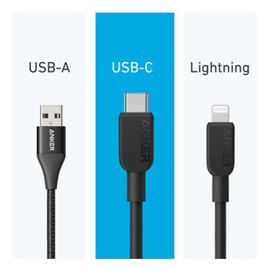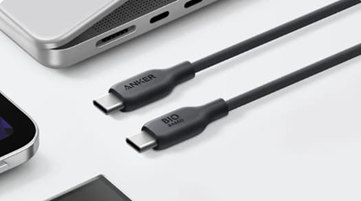Since
the invention of mobile phones in the 20th century, we have experienced several
mobile phone changes, from the beginning of the flip phone to the current touch
screen phone, and even folding mobile phones. In addition to the obvious
changes in the shape of mobile phones, the most obvious is the data line, so in
this blog, we will discuss the history of data lines and future trends.

History and Future Trends
Circular Joint
The
earliest charging ports were round, and Nokia phones led the way. The circular
interface is large and small and can be plugged and removed at will. However,
because this interface has a single function, most of it is only used for
charging and cannot transfer files. Coupled with the circular design, in the
long-term plugging process, it easily appears to be a loose interface, poor
contact, and other problems, so the circular interface gradually disappeared on
the mobile phone.
Old Long, Flat, and Wide Interface
The
old long, flat, and wide interface is mainly used in Samsung's Anycall series
mobile phones, which is an interface type exclusively customized by Samsung for
its own mobile phones, and is now almost extinct. The original iPhone to iPhone
4S series devices all use the 30-pin Dock interface, which is also a long, flat,
and wide shape. This interface, large volume, poor transmission speed,
compatibility, and openness are not very good.
Mini USB Port
This
interface is also called a mini USB, which is T-shaped, small in size, and has
excellent anti-misinsertion performance. Although many mobile phones are no
longer used, some mobile hard disks, digital cameras, elderly machines, mobile
POS machines, and PSP game consoles are still used, after all, small ah.
Micro USB Interface
Micro
USB interface is the next generation of Mini USB specification, that is, a
portable version of the USB2.0 standard, compatible with USB1.1 and USB2.0. It
is smaller and faster than Mini USB, with up to 10,000 plug and unplug life and
strength, but it can only be inserted on one side. Most of the mainstream
flagship mobile phones now abandon this interface, and only some smartphones
priced at 100 yuan and 1,000 yuan are still in use.
Lightning Interface
Starting
with the iPhone5, Apple has changed to a new Lightning port, which is smaller,
more versatile, and supports positive and negative insertion. This interface
supports up to 2.4A current carrying capacity and transmission speed in USB 2.0
standard. Although the standard is a little lower, the actual performance and
experience are very good, and it is currently the standard interface of the
iPhone.
Type C Indicates the Interface
After
Micro USB, Type-C is another interface Type that is widely used on Android
smartphones. The Type-C interface first appeared in the Nokia N1 and was used
in Apple's MacBook in 2015. Today, the Type-C interface is already the standard
interface of Huawei, Xiaomi, OPPO, Apple, Samsung, and other major brands'
flagship mobile phones, which can be described as promising. Many charger
manufacturers are also working on the usb c charger. Like Anker, USB-C is the future of
technology, providing fast, efficient, and versatile connectivity. Leading
USB-C innovation, Anker is committed to providing us with reliable USB-C
chargers as the ultimate charging solution for your devices. Step into the
world of next-generation charging technology and together we are shaping a
powerful tomorrow!

Conclusion
Mobile
phones have become a necessity for modern people, and the data cable has become
very important. The future trend of data lines seems to be the world of type-c,
we will wait and see.
